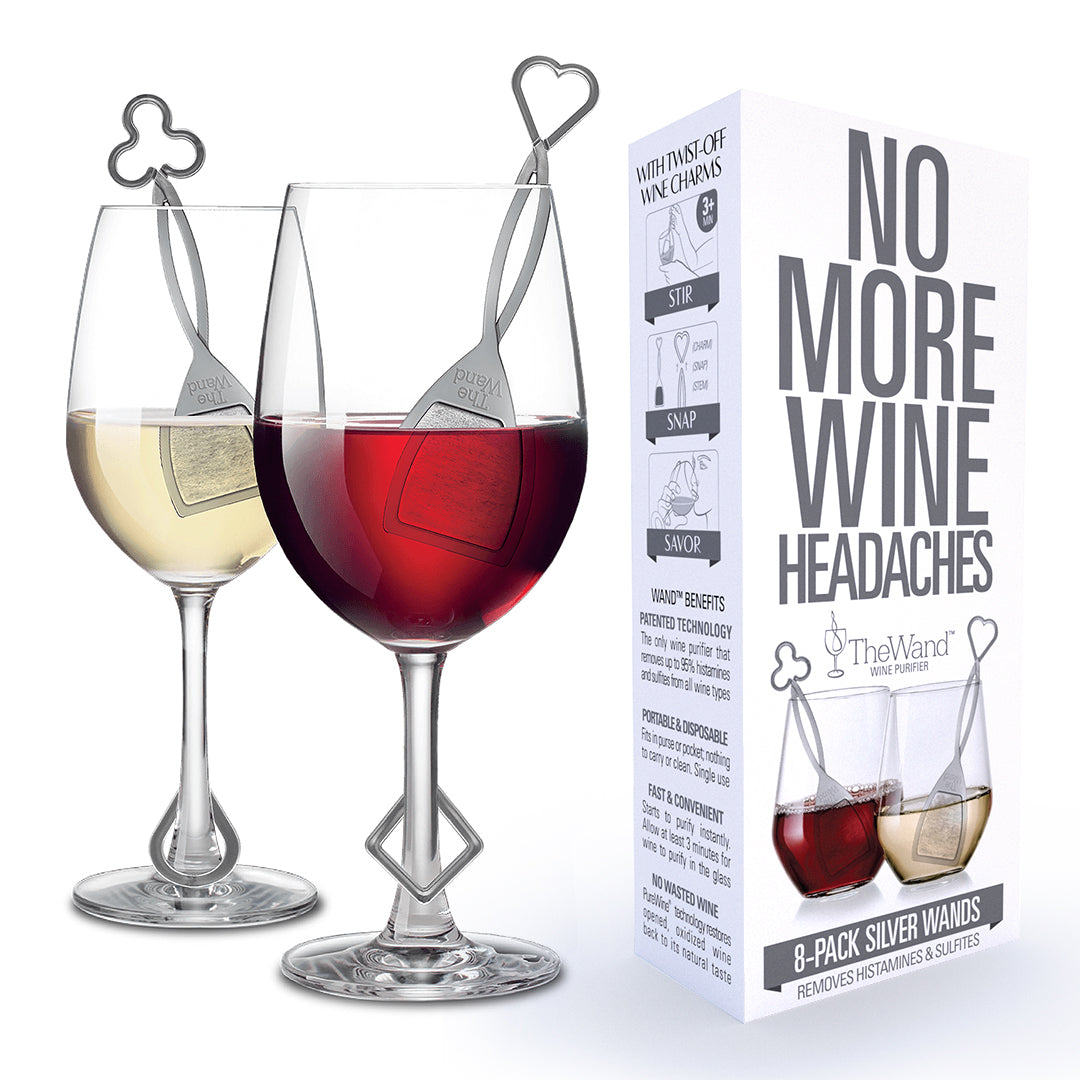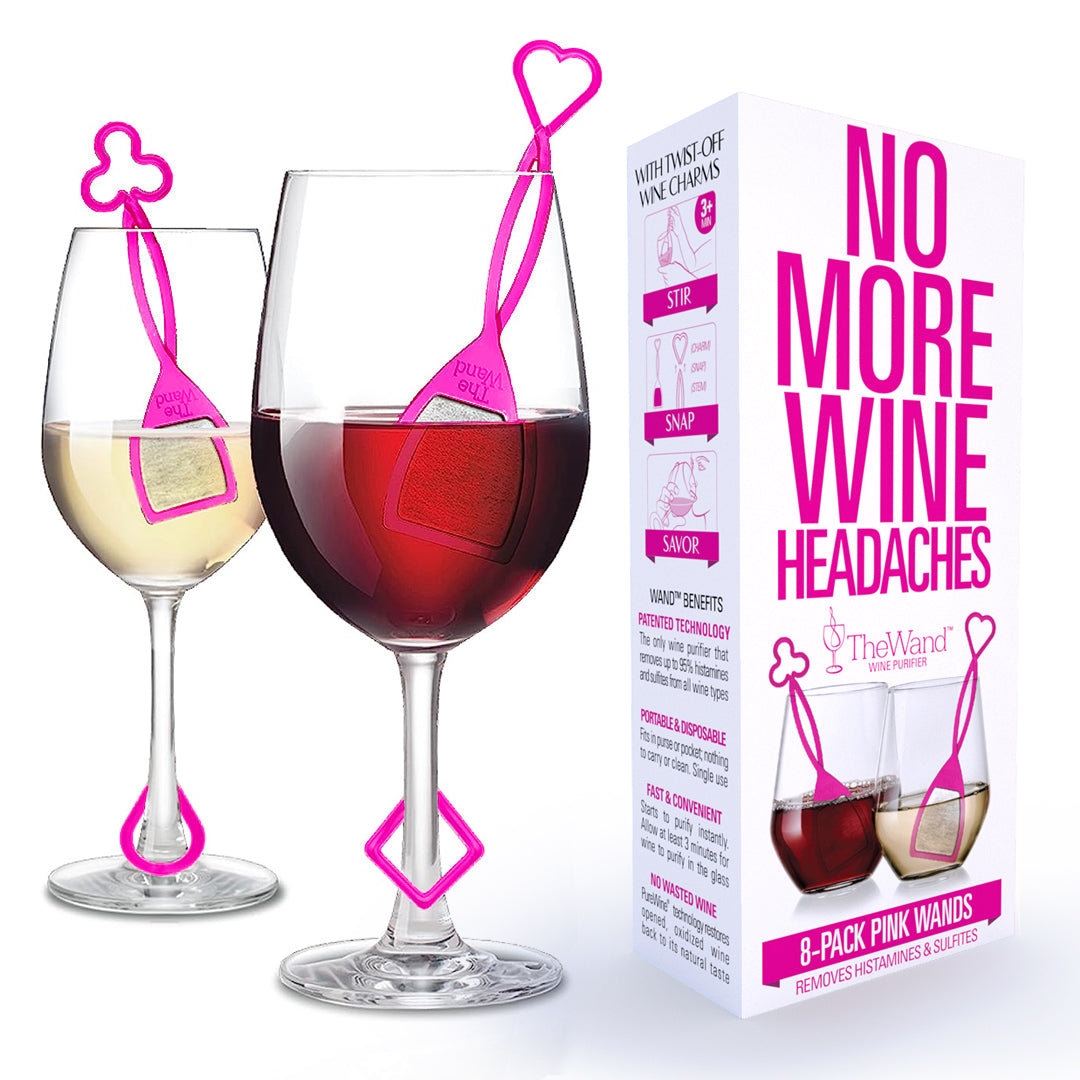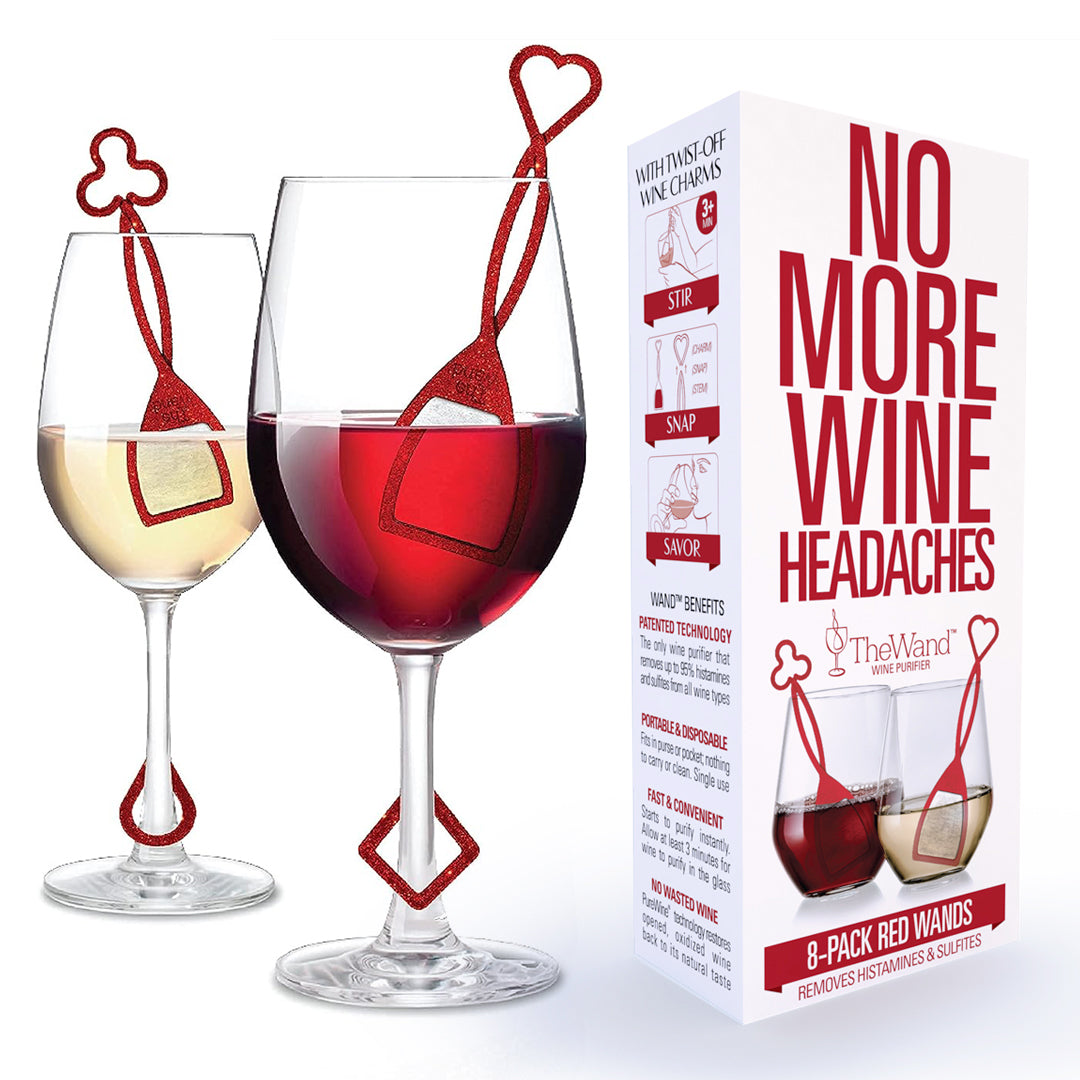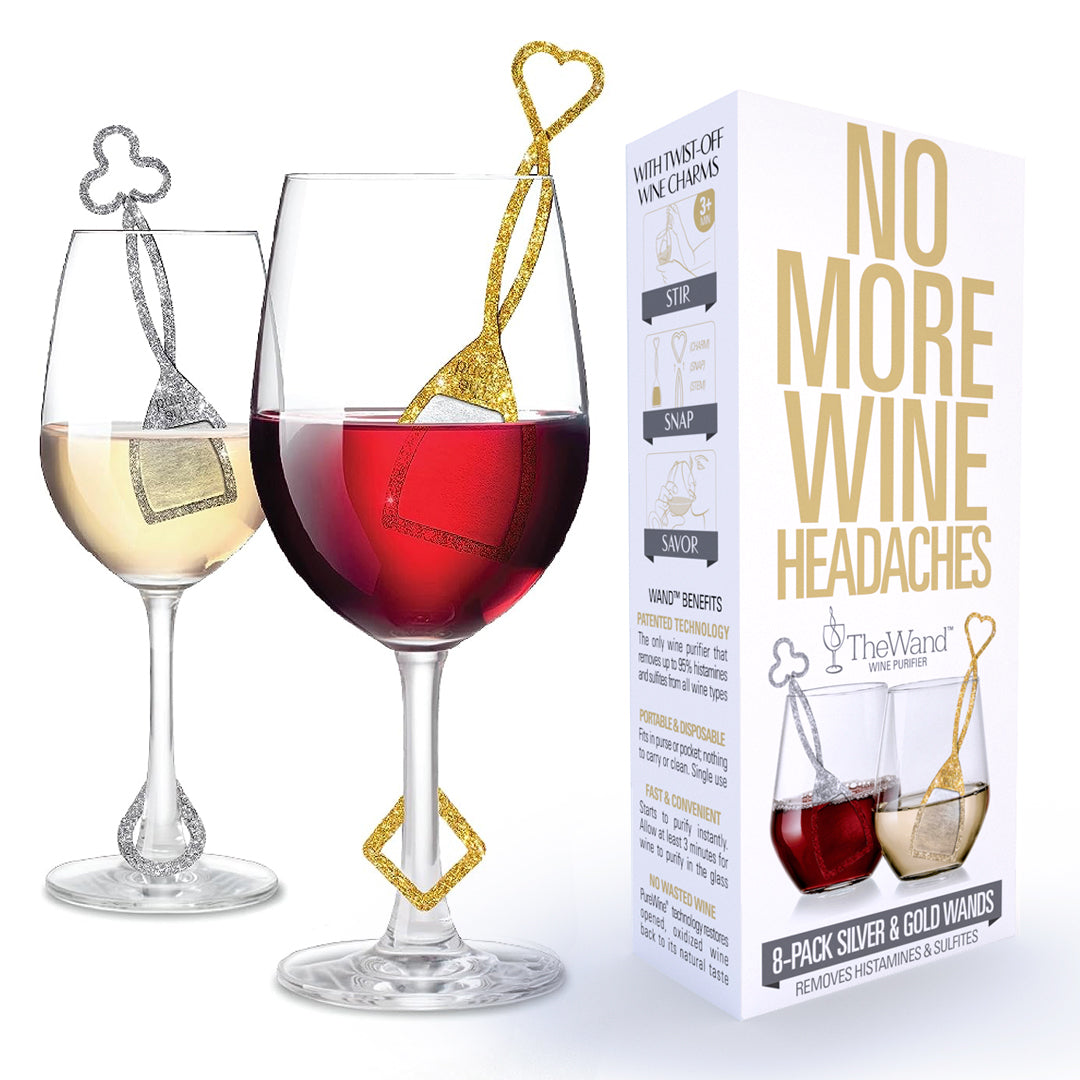Sulfites, Histamines & Never-Ending Wine Myths: Part One
Sulfites, Histamines & Never-Ending Wine Myths - Part One
I love a healthy discussion as much as anyone, but not when the conversation revolves around a number of myths and misleading information. Especially when those inaccuracies deal with histamines and sulfite preservative sensitivities from drinking wine.
After talking with a number of wine lovers who suffer negative side effects from it, I’ve decided to tackle some of the more common myths surrounding the pervasive problem of wine “allergies” in a series of four blog posts. These posts will aim to set the record straight and explain why certain beliefs simply don’t hold up to scientific scrutiny. But most importantly, I hope this information will enable you to fully enjoy your favorite wine and not be concerned about nasty side effects.
Common Wine Myths
There are at least 12 common wine myths I’ve heard before that will be addressed and answered over the next several posts:
- “I am sensitive to the sulfite preservatives in red wine, so I switched to drinking white wine or spirits.
- “I only drink European ‘Old World’ wines because they don’t add sulfites to them.”
- “Organic wines don’t contain sulfites, so I only drink them now.”
- “I know I am not sensitive to sulfites because I can eat dried apricots and mangos.”
- “I am very allergic to the tannins in wine, so I switched to drinking beer or vodka.”
- “My wine headaches are caused by dehydration; I just need to drink more water.”
- “Champagnes must have lots more alcohol in them because they go to my head much faster and give me really bad hangovers.”
- “I love to use my carafe or aerator before drinking red wines to let them “breath” and improve their taste.”
- “I am gluten-intolerant, so I can no longer drink wine.”
- “They must be changing the way wines are made because I recently started getting bad side effects from certain wines after just 1 or 2 glasses.”
- “I’m Asian and experience the dreaded Asian Flush from the alcohol in red wine.”
- “I hear adding hydrogen peroxide drops to my wine will eliminate the sulfites and get rid of the bad side effects.”
Any of these sound familiar? If so, you’ve come to the right place for answers, so let’s get started by dispelling the first two.
“I am sensitive to the sulfite preservatives in red wine, so I switched to drinking white wine or spirits.”
White wines and Champagne can actually have much higher levels of sulfites than red wines. Seriously.
Here’s the thing to keep in mind—low levels of sulfites naturally form in ALL wines during the fermentation process. However, white wines and champagnes can have much higher levels of sulfites than red wines because reds have a lot of antioxidants in them that stabilize the wine during storage. In fact, typical red wines have 10-40 parts per million (ppm) total sulfites while white wines usually have 75-150 ppm sulfites. Sweet wines like Sauterne or Moscato? With high levels of sugar they can have as much as 350 ppm sulfites. That’s a lot.
If you quit drinking red wines like Cabernet Sauvignon, Syrah or Merlot and switched to Moscato or Sauvignon Blanc wines to avoid negative side effects (like headaches, flush, stomach issues or nasal congestion), you’re not reacting to the sulfites in red wine.
How to Test for Alcohol Sensitivity
There are actually several simple tests you can conduct to determine which alcoholic beverage you’re most sensitive to. Do a side-by-side comparison with two shots of high-quality vodkas, like Tito’s, as a control for two glasses of sweet white wine or champagne (these typically have higher levels of sulfite preservatives). If you have a noticeable, allergic-like reaction to the sweet wine and not the vodka, that’s a clear indication you don’t have an ethanol sensitivity because they both have the same amount of ethanol. This means you’re intolerant to the sulfites.
Alcohol Sensitivity Test - Step 2
Next, substitute the vodka with two glasses of a full-bodied Cabernet Sauvignon from Napa Valley. If you only experience side-effects from the reds and not the whites or champagne, you are most likely sensitive to something called biogenic amines (more on them later).
Alcohol Sensitivity Test - Step 3
The last test? Consume two bottles of a single- or double-unfiltered craft IPA beer. Some people are particularly sensitive to the fermentation byproducts from this type of beer production.
Using these simple (and hopefully enjoyable) tests, you’ll be able to narrow down the type of fermented alcoholic beverage you are most sensitive to. Because the total alcohol (ethanol) consumed in each test is relatively equivalent, it should be a pretty accurate test for you to establish your specific sensitivities.
“I only drink European ‘Old World’ wines because they don’t add sulfites to them.”
Do European Wines Have Less Sulfites? No!
“When I went to Europe last summer, I drank some incredible wine and never got a headache because they don’t put sulfites in them.” Unfortunately, this isn’t true.
European wines normally have just as many sulfites in them as American, Australian and South American wines. You can easily confirm this by looking closely at the label on the bottle. Since 1988, federal law requires any bottle of wine sold in the United States that contains more than 10 ppm sulfites include that information on its label. If it says “CONTAINS SULFITES” (or on Italian wines, “CONTIENE SOLFITI”), you know sulfites are a part of the process. Didn’t see that warning label on the bottle you enjoyed while wandering the streets of Venice? That’s because labeling laws differ from country to country. Look a little bit closer next time, there were definitely sulfites in the wine.
I hope this has clarified a few common myths you may have heard about sulfites. In my next blog, I’ll break down some commonly held misperceptions around organic wines, dried apricots and mangos—from talking with many of you, there are a lot.
Cheers,
David Meadows, PhD
CEO & CoFounder
P.S. Have a commonly held wine belief you want to be answered? Send it to David+Derek@drinkpurewine.com and I’ll try to answer it in a future post. Who knows. You may even get a few free Wands™ for your effort.

 (20 reviews)
(20 reviews)












